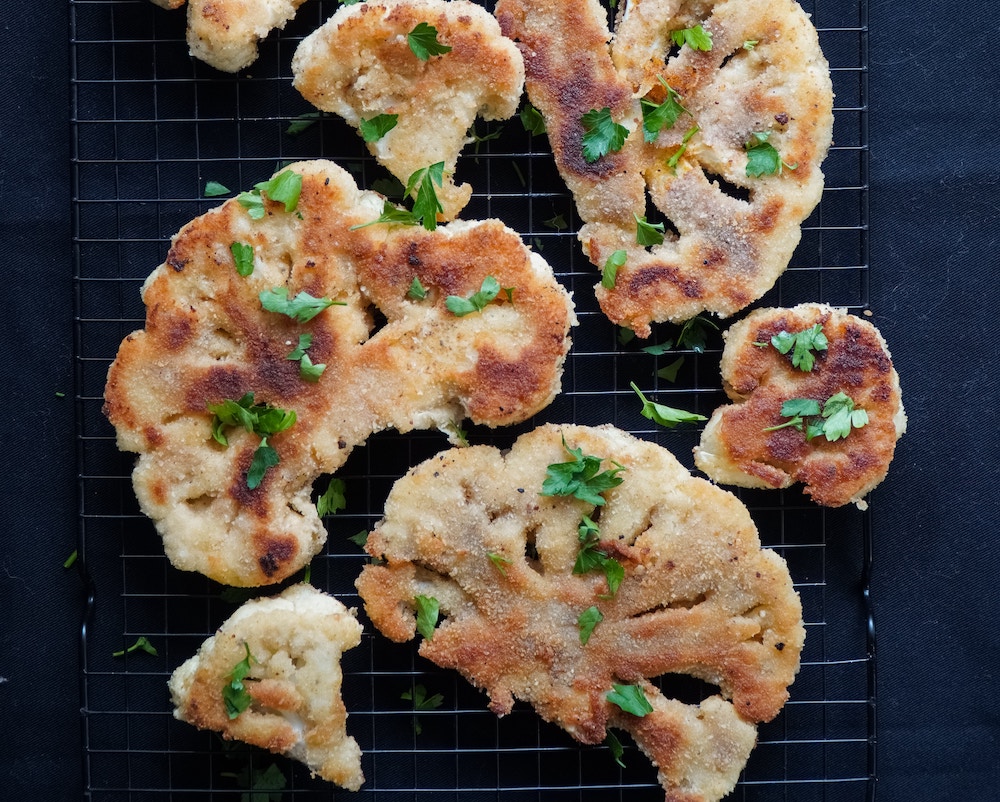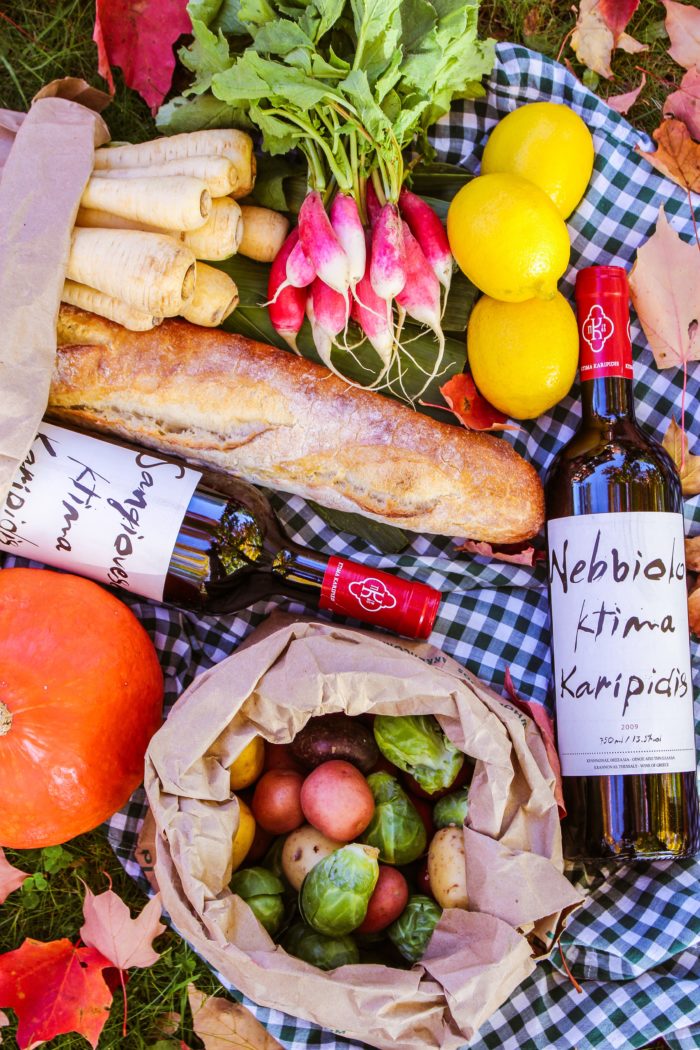
Preparing your own food is one of the best ways to follow a particular diet (or eating lifestyle) and stay healthy. Not to mention it’s a great money saver—even if you occasionally splurge for those gourmet artichoke hearts! (See our 15 Easy Vegan Meal with Common Ingredients for proof!)
Despite everything that cooking at home has going for it, it’s understandable to be intimidated by cooking for yourself—and *gulp*–your friends and family. Alternatively, more experienced cooks may find themselves in a cooking rut or feeling frustrated by the challenge to consistently create restaurant-yummy meals at home (speaking from experience here).
I’m always looking for ways to improve my cooking—and inspire others to give cooking a try—so I decided to gather some cooking advice from pro chefs and top foodies that make cooking feel a little more accessible. The following cooking tips are applicable whatever your level of cooking is. Here’s to more delicious food!
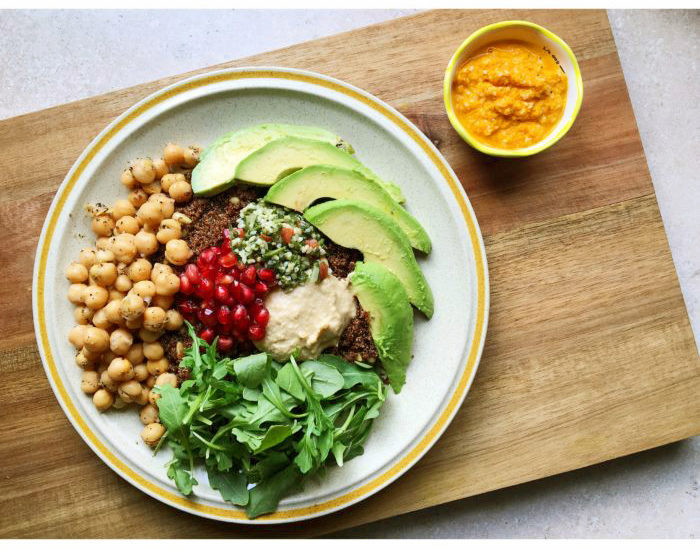
Mediterranean Kaniwa & Carrot Turmeric Dressing
Prep, prep, prep!
Chefs from all walks of cooking can’t emphasize prep enough. It saves you time, makes cooking less hectic (and more accurate), and even allows you breathing room to clean up as you cook.
“The most time-saving device is reading recipes to their fullest before starting … That way you have time to start and sometimes finish certain instructions while others are in the works.”
—Emilie Bousquet-Walsh, Go Burger Bar and Grill, New York City
“Whether I’m cooking at home or in the restaurant, having a game plan is essential. Measure our all of your spices, chopped herbs, or vegetables and put them in bowls. Organize them in the order they will be used in the recipe … Once you have all of your tools and ingredients handy, you can get in the kitchen and really have some fun!”
—Emeril Lagasse, author of Emeril 20-40-60: Fresh Food Fast
“We run a meal planning service, and our customers tell us their most time-saving trick is to set aside 1 hour on a Saturday or Sunday for prepping all their vegetables. You mince all your garlic for the week at once, chop all your onions, pull out your food processor just once to grate carrots and cabbage, etc., and then pack prepped veggies up. This not only saves time but of course makes it more likely that you’ll cook during the week. We recommend that folks use this time to multi-task – spending time with a family member or catching up on their favorite podcast.”
—Jess Dang, Founder of CookSmarts
Season Smartly
Fresh herbs are generally inexpensive and easy to find at your local grocery store. A sprig here and there add so much beauty to dishes.
“They’re an easy way to add flavor to your cooking without butter or oil. Fresh basil, thyme, cilantro, and chives, for example, finish off a dish and elevate its natural taste…Fresh herbs keep well in the refrigerator when washed, dried, and stored between layers of dry paper towels in an airtight container or plastic bag. Save dried herbs for seasoning soups, stews, and stocks as they cook.”
—Nicole Garfield, culinary nutritionist at The Pump, New York City
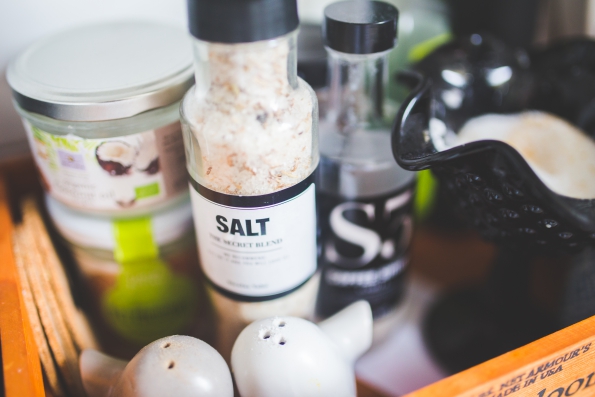
Plant-based chef Sarah Britton swears by “The Holy Trinity of Flavor.”
“In anything you make, you need three things: salt, sugar, and acid. If you don’t have all three of those things, your food will always taste like something is missing.”
—Sarah Britton, My New Roots
Salt: sea salt, Himalayan rock salt, soy sauce, tamari, miso
Acid: citrus juice (lemon, lime, grapefruit), vinegar, fermented veggies (sauerkraut, kimchi)
Sugar: stevia, maple syrup, coconut nectar, coconut sugar, dates, fruit juice, apple sauce
“When a recipe calls for zest, instead of grating it into a separate container or onto parchment paper, hold the zester over the mixing bowl and zest directly onto the [other ingredients]. The aromatic citrus oils that are sprayed into the bowl will give the dessert a zesty finish.”
—Pichet Ong, Spot Dessert Bar, New York City
Know Your Oil
Oil is an essential part of many cooked (and raw) dishes. Knowing how and when to use it (or not use it) can take your dish to the next level.
“If you find you need more oil in the pan when sautéing, add it in a stream along the edges of the pan so that by the time the oil reaches the ingredient being cooked, it will be heated.”
—Anita Lo, Annisa, New York City
“Do not use oil in the water when boiling pasta: It will keep the sauce from sticking to the cooked pasta.”
—Missy Robbins, A Voce, New York City
Steam—Don’t Boil
“There’s hardly anything I boil anymore. I use my stainless-steel steamer for potatoes and other vegetables; they retain their color and taste, hold more nutrients, and cook faster.”
—Frank Terranova, Johnson & Wales University, College of Culinary Arts
Get Hot
Want perfectly crisped veggies? When roasting vegetables, preheat your cooking sheet in the oven, so it’s hot when you place your veggies on it. This will help prevent the vegetables from steaming as the sheet heats in the oven.
—Okay, so not a direct quote, but I read this in a Bon Appetit while waiting in the hair salon—and it’s good advice!
“To get nice, crispy caramelization on roasted vegetables, simulate the intense heat of an industrial oven: Bring your oven up as hot as it goes, then put an empty roasting or sheet pan inside for 10 to 15 minutes. Toss the vegetables — try carrots or Brussels sprouts — with olive oil, salt and pepper, and put them on the hot pan. This method will give you the high heat you need to caramelize the sugars in the vegetables quickly.”
—Naomi Pomeroy, Beast, Portland, OR
Perfect the Basics
Pasta is usually pretty simple—but a little care in cooking can make it divine.
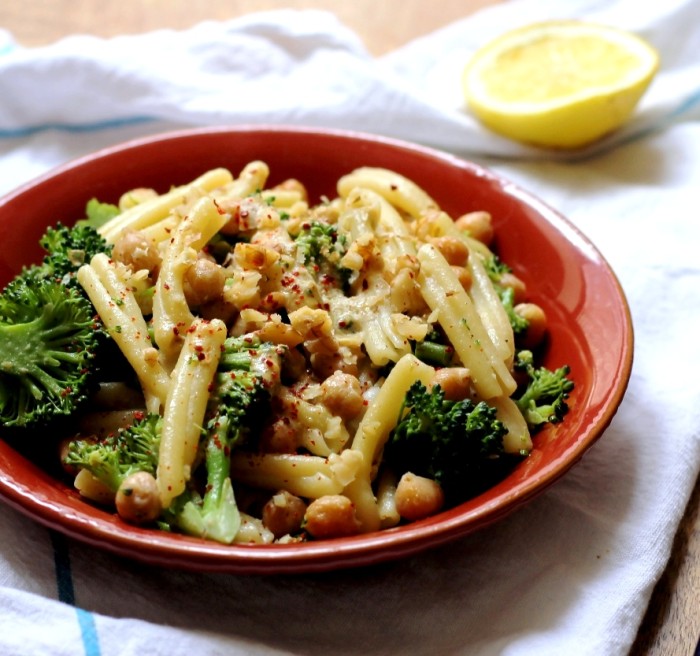
Vegan Pasta with Broccoli and Chickpeas
“Whenever you cook pasta, remove some of the pasta-cooking water (about 1/4 or 1/3 cup) just before draining. When you add the sauce of your choice to the pasta, add a little of the cooking liquid. This helps sauce to amalgamate; the starch in the water adds body and a kind of creaminess. An old Italian friend of mine instructed me in this finishing touch early on, and I would never, ever leave it out. It makes all the difference.”
—Nigella Lawson, Nigella Kitchen
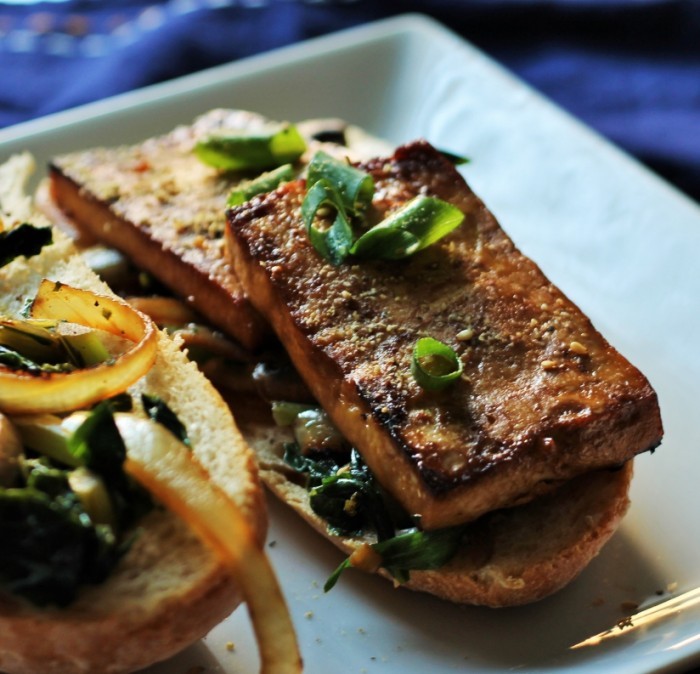
For many years, homemade yummy tofu eluded me. No more. Here are Michael Natkin’s rules for good tofu every time.
“1. Buy good tofu.
2. Cut your tofu into slabs that are 3/8″ thick.
3. Soak your tofu in hot, salted water for 15 minutes (optional).
4. Pat your tofu dry with a clean dish or paper towel.
5. Pan fry it in a big cast-iron skillet. Don’t skimp on the oil, don’t overcrowd the pan, and cook on one side until it’s deeply brown before flipping.”
—Michael Natkin, Herbivoracious
Finally, Make It Pretty!
We eat with our eyes, too!
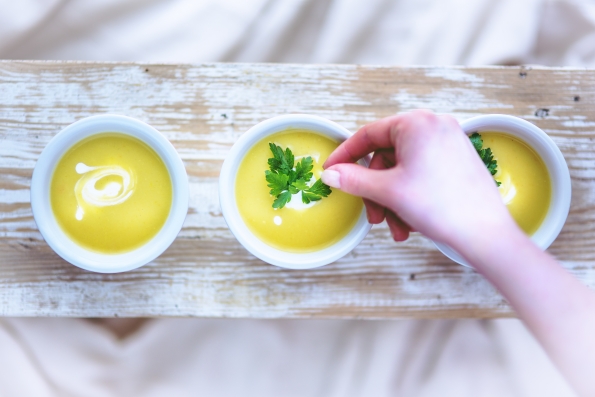
“Go green: Just a small sprinkle of chopped fresh herbs or a few ribbons of green onion bring a freshness and vibrancy to the plate. For a fancier meal, microgreens — the tiny shoots of edible plants — instantly make a dish look restaurant-ready.”
—Anjali Prasertong, Eat Your Greens
“The odder the better: Things in even numbers look strange on a plate. So whether you’re putting scallops or dollops of sauce [on the plate], put three or five, not two or four.”
—Rick Bayless, Frontera Grill and Topolobampo, Chicago
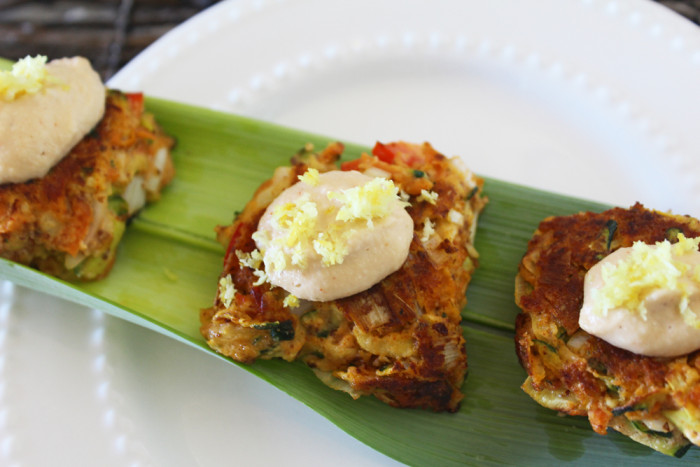
Vegan Chipotle Veggie Bites (Good things come in threes!)
Play with contrasting color and texture: “If you’re serving up a pesto dish, which has a lot of green in it, you might want to pair it with something red (the complementary color) like tomatoes or red peppers … Similarly, mix up the texture. If you made a smooth vegetable soup, serve it with a carrot stick and a celery stick (maybe an inner one with some of the delicious little greens still attached) across the top of the bowl.”
–Emilie Chapelle, Around the Kitchen
What Cooking Tips Do You Swear By?
Make cooking easier: Creating Easy Vegan Side Dishes
Tips for the Reluctant Vegan Chef
10 Super Useful Cooking Tricks
Get more like this–sign up for our newsletter for exclusive inspirational content!
__
Photos: Unplash, Lauren Sacerdote (Kaniwa) Kaboompics (salt, soup), Peaceful Dumpling (Tofu Sandwich), Mary Hood Luttrell (Veggie Bites)




